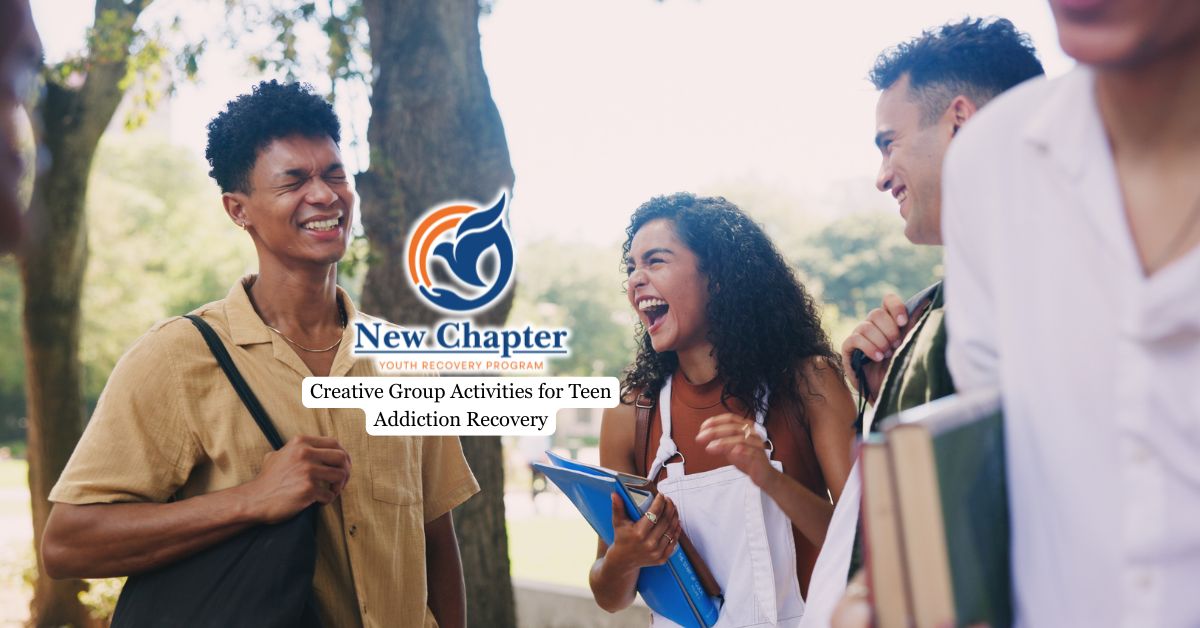As young individuals navigate the challenges of academic demands, societal norms, and a world that grows more intricate by the day, many find themselves ensnared in a relentless cycle in which anxiety drives substance abuse, and substance abuse, in return, intensifies anxiety.
This article will explore the ways in which adolescent anxiety propels substance abuse, investigate the substances most commonly abused by anxious teens, and examine the extensive repercussions of this destructive pattern.

Understanding Teen Anxiety
Anxiety disorders affect nearly one-third of adolescents aged 13-18, making them one of the most common mental health issues faced by teens today.
The overwhelming feelings of worry, fear, and unease can lead many teenagers to seek relief through substance use, putting them at a higher risk of developing substance use disorders.
Teens often turn to drugs or alcohol as a form of self-medication, with 40% citing anxiety relief as a primary motivation for their substance use.
Left untreated, anxiety can exacerbate feelings of isolation and hopelessness, further fueling the cycle of substance abuse.
Read more about our dual diagnosis program at New Chapter Youth Program which is designed to help teens receive individualized care that targets the root causes of their anxiety while also addressing substance abuse issues.
How Anxiety Leads to Substance Abuse
Anxiety symptoms can trigger impulsive behaviors, making you more susceptible to experimenting with drugs or alcohol as a coping mechanism. While substances may provide temporary relief, they ultimately worsen anxiety in the long run, creating a vicious cycle of dependence and deteriorating mental health.
The neurobiological changes caused by chronic anxiety can increase vulnerability to addiction, as both conditions affect similar brain circuits involved in stress response and reward processing. This dangerous interplay between anxiety and substance use not only compromises a teenager’s current well-being but also significantly increases their risk of developing long-term substance use disorders and other mental health complications.
Here we have gathered more information about the impact of drug-related social media content on teen’s perception of substances.
Risk Factors for Anxious Teens
The developing teen brain is particularly vulnerable to addiction, and using drugs or alcohol to cope with mental health issues can quickly spiral into a substance use disorder. The pressure to fit in socially, succeed academically, and navigate personal challenges can lead you down a path of addiction, with over 50% of teens citing anxiety relief as a primary motivation for their substance use.
With the right support and coping strategies, teens can learn to manage their anxiety without resorting to substances.
Warning Signs and Symptoms
Pay close attention to persistent feelings of sadness or hopelessness, which affect over a third of adolescents.
Also, look out for significant changes in behavior or academic performance, as these could be indicators that your teen is struggling with anxiety and potentially turning to substances to cope.
Be aware that teens experiencing high stress levels are much more likely to use marijuana and alcohol. The pressure to excel academically contributes significantly to teen anxiety, and many students report using substances when their performance suffers.
Physiological symptoms like increased heart rate and rapid breathing can also drive teens to seek relief through drugs or alcohol. However, this fails to address the underlying mental health issues.
It’s essential to have open discussions about anxiety symptoms and their potential link to substance abuse. Many teens may not recognize their own struggles or feel comfortable seeking help on their own.
Learn more about the significance of early intervention for adolescents abusing substances here: https://newchapteryouthprogram.com/importance-of-early-intervention-for-teen-drug-abuse/ .

Common Substances Abused by Anxious Teens
You’ll find that 40% of adolescents use alcohol specifically for anxiety relief, seeking a temporary escape from the pressure they face.
Marijuana is another common substance abused by anxious teens, with 76% using it to feel mellow or calm their nerves.
Prescription drugs are also misused, as 31% of teens take stimulants to stay awake, often driven by academic pressures and anxiety.
Sleep improvement is a motivator for 44% of adolescents using substances, reflecting their struggle with anxiety-related insomnia.
On top of all, 44% of anxious teens report using drugs or alcohol to forget problems or bad memories, indicating a concerning trend toward avoidance as a coping mechanism.
Final Thoughts from New Chapter Youth Program
Acknowledging the complex relationship between mental health challenges and substance abuse is the crucial first step in providing effective support and intervention for struggling adolescents.
New Chapter Youth Program offers a specialized dual diagnosis treatment program that is designed to address both mental health and substance use disorders concurrently. This comprehensive approach is essential for breaking the cycle of anxiety and addiction, equipping teens with the necessary tools to build a healthier and more resilient future.






